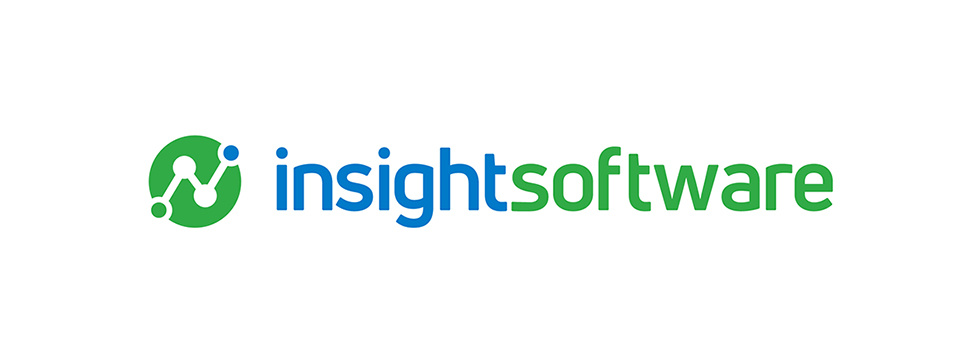Over the past few years, the major ERP vendors have shifted their focus to the cloud. From a technical perspective, that has required a delicate balancing act, managing tradeoffs between the old and the new. In other words, software publishers have sought to minimize the level of disruption for existing ERP customers while modernizing business applications, increasing integration, and adding important new functionality.
At some point, though, that process reaches its natural limits. Modernizing legacy applications requires significant investment by those ERP vendors. To accomplish some of the key technical objectives that contribute to lower costs, increased agility, and customer value, there comes a point when vendors must make a clean break with the past.
That kind of clean break inevitably involves some disruption for both the software vendors and their customers. An evolving toolset, shifting data models, and the learning curves associated with change all create some kind of cost for customer organizations. Sometimes those costs hide in payroll and benefits, as staff spends significant time adjusting to those changes. In other cases, costs are more obvious and clearly measurable.
In the end, ERP customers should (at least theoretically) arrive at a place where their software systems are delivering greater value to the organization by enabling higher efficiency, stronger operational control, and innovation. On the way there, however, there is a great deal that business leaders can do to rein in costs, reduce risks, and increase the value that ultimately comes out of ERP system upgrades.
For nearly two decades, Microsoft has been managing a portfolio of ERP solutions for small and mid-sized enterprises (SMEs). When the company acquired Great Plains Software in 2001, it took ownership of two widely used ERP products – Great Plains and Solomon. A year later, when Microsoft acquired the Danish ERP company Navision, it took on two more products – Navision and Axapta.
Microsoft rebranded the resulting portfolio of four different ERP packages as the Dynamics family of products (GE, SL, NAV, and AX, respectively). The company has been maintaining all four products ever since, enabling customers to stay the course with their existing ERP software. That has been great insofar as it has minimized disruption for Microsoft’s customers, but understandably, the expensive and cumbersome process of managing four different code bases is finally coming to an end.
Going forward, Microsoft will focus its efforts on two products aimed at two different segments of the market. Microsoft intends Dynamics 365 Finance & Supply Chain (F&SCM) for mid-sized enterprises, while Dynamics 365 Business Central (D365 BC) fits smaller businesses with somewhat simpler requirements. While both products have their roots in one of the existing Microsoft ERP code lines (AX and NAV, respectively), the company has made some significant changes and modernized their technology foundations for a cloud-first approach.
If your organization is currently running Dynamics GP, Dynamics SL, or Dynamics NAV, then Microsoft is likely already encouraging you to migrate to D365 BC. Microsoft plans to support its legacy products for at least another eight years, but the company’s future investments in improved functionality will focus on the two new D365 products.
As you begin to think about your eventual migration to D365 BC, here are some key factors to keep in mind:
1. Microsoft D365 Business Central Is a New Product
Because Microsoft D365 BC is built upon Microsoft’s NAV code base, many people think that it is simply an upgraded version of that product. In many respects, that is a reasonable statement insofar as Microsoft carried the key concepts from NAV over to D365 BC and designed the functional code and data model with NAV as a starting point. Nevertheless, the move to Business Central will represent a more significant change for most organizations that are currently running Dynamics NAV.

For companies running Dynamics GP or Dynamics SL, the transition to Microsoft D365 BC will require a clean break with the past. Migrating to Business Central is tantamount to implementing a completely new ERP system. It will require a comprehensive analysis of existing business processes, then mapping those business processes to Microsoft D365 BC.
2. Customizations and ISV Products Will Require Review
Regardless of which ERP system you are migrating from, you will need to rewrite existing customizations and review integrated third-party products to ensure that they will work with Microsoft D365 BC.
Because Microsoft D365 BC is essentially a new product, it may be possible to address your company’s requirements with the off-the-shelf functionality that already exists in the product. Regardless of which legacy system you are migrating from, you should perform a review of your existing business processes and map those to the new ERP system. Wherever there are gaps, you will need to consider extending Business Central or using third-party products.
If you are currently running Dynamics GP or Dynamics SL and you have made any customizations to that system, you will need to start from scratch in Microsoft D365 BC. In some cases, the required functionality might already exist in D365. Otherwise, you’ll need to address those gaps with extensions or third-party products. Customers who have built customizations in NAV will need to re-create those as “extensions” in Business Central. Most will not port over to D365 automatically.
You will need to upgrade any third-party products that you have been using with your existing system to a version that is compatible with Microsoft Dynamics Business Central if you plan to continue using them. Check with vendors to learn more about their product roadmap, upgrade plans, and supported functionality. Leading vendors will be ahead of the game in this respect, with products already available for Microsoft D365 BC and a clear upgrade path in place.
3. Allocate Adequate Time and Budget For Reports
Companies implementing a new ERP system may spend as much as 25% of their total budget developing reports. Even if you’re upgrading to a new version of an existing product, managing reports can create a huge drain on budget and resources because the standard reporting tools that come with most ERP systems tend to require highly specialized technical expertise. With all the other tasks required to make an ERP implementation or upgrade successful, the added burden of migrating reports makes matters even worse.
Because Microsoft D365 BC is a new product, you will need to review and test existing reports. Customers migrating from Dynamics GP or Dynamics SL will need to recreate any existing reports developed with the standard Microsoft tools from scratch in Business Central.
Fortunately, there are ways to mitigate and even eliminate much of the work associated with this part of the ERP implementation process. If you are currently using Jet Reports against a NAV database, you can simply take your reports with you when moving to Microsoft D365 BC.
Similarly, Jet Analytics works with the entire family of Dynamics products, including GP, SL, NAV, and D365 BC, making it remarkably easy to create a data warehouse, extract and transform data from the source system, and easily develop sophisticated reporting and analytics.
The same holds true for those who use Power BI in conjunction with Microsoft D365 BC. You must build and maintain Power BI models, often at great expense and with the help of outside consultants. Jet Analytics works with Power BI just as it does with Microsoft D365 BC, providing ease of use via a common data source for all dashboards.

One of the key benefits of using Jet Analytics is that it makes it remarkably simple for end-users to create and modify reports, without help from experts in the IT department or expensive outside consultants. By putting that power directly into the hands of finance and accounting professionals, companies can streamline the process of creating or modifying reports, not only during a system implementation or migration but any time you need report customization in the future.
This has some additional benefits for an ERP system migration or implementation, though – namely, that it offers a virtually seamless report migration process. Instead of rewriting reports from scratch in the new system, existing reports can simply be reviewed to determine whether they need any further modification. In the case of a system migration from Dynamics NAV to D365 BC, there is a high likelihood that any reports developed in Jet Analytics will work with Business Central without requiring any modification at all.
4. Plan Ahead for Data Migration
Data migration tools are available that help customers to move data from any of the legacy Dynamics products to D365 BC. However, most customers will require a more sophisticated approach to getting data into Business Central. If you have made customizations or modifications that extend the existing data in your legacy ERP system, an off-the-shelf automated approach to migration may not work very well.
In a separate post, we have discussed the potential for using a data warehouse as a means for automating data extraction and transformation in advance of system migration. That enables companies to easily perform test runs of the data migration process and even to train users on the new system with actual company data instead of using generic demo data. This automated approach shortens the downtime required in the days preceding an ERP system go-live. With Jet Analytics, it is remarkably easy to build the infrastructure to automate major portions of the data migration process.
On the other hand, if you are migrating from NAV to Microsoft D365 BC, you may decide that you do not wish to migrate years of legacy data over to your new ERP. At the same time, you may not want to lose the ability to report against historical data. In that case, you can use Jet Data Manager or Jet Analytics to store the historical data from your old system in a data warehouse. When needed, you will still have the ability to report on many years of historical data, appending transactions from the new system with ease, all while avoiding filling the new ERP with a large volume of historical data.
insightsoftware provides financial intelligence tools for over 140 different ERP systems, including the entire family of Microsoft Dynamics products. For nearly three decades, we have been helping business leaders get the information they need, quickly, accurately, and efficiently. If your organization is considering a migration to Microsoft Dynamics 365 Business Central at any point in the future, we encourage you to learn more about the benefits of our simple, powerful reporting tools.





